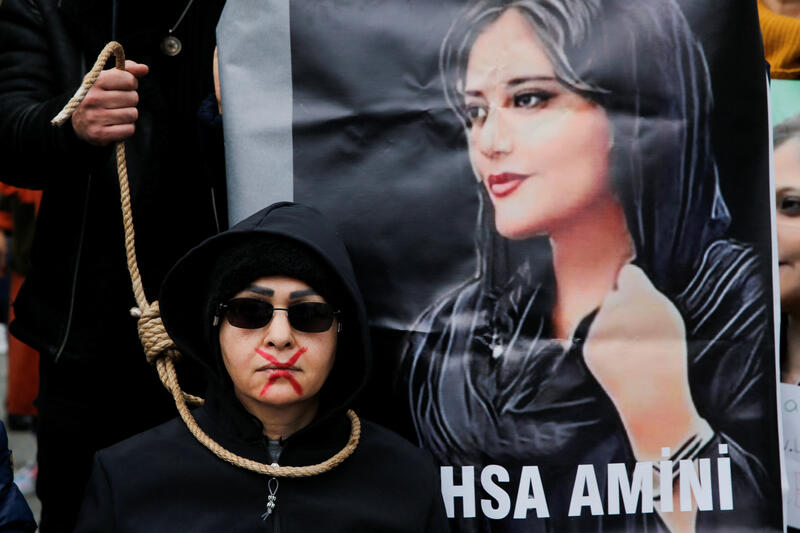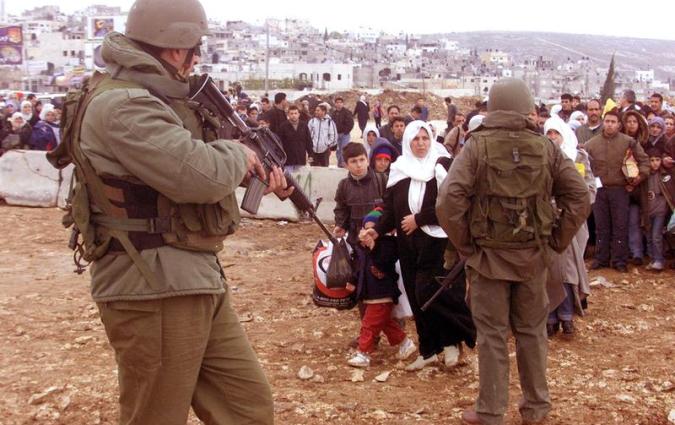In this piece
Access denied: insights on newsgathering in repressive regimes

A woman in Istanbul, Turkey, takes part in a 2022 protest against the Iranian government following the death of Mahsa Amini. Similar protests took place across Iran, but it was almost impossible for journalists to gain access and photograph the dissent. (Image: Reuters/Dilara Senkaya)
In this piece
Key challenges and strategies | Border reporting | When the internet is turned off | Ethical considerations | The path forwardThe role of journalism in authoritarian and conflict-affected regions remains as crucial as it has ever been. While technological advances provide new opportunities for newsgathering, there are still plenty of pitfalls for those who are trying to convey the truth.
Countries such as North Korea, where the government exerts total control over all media; Eritrea, where independent journalism is virtually non-existent; and China, where stringent censorship and surveillance restrict access to sensitive regions like Xinjiang and Tibet, present extreme challenges for journalists.
Similarly, nations like Syria, where ongoing conflict and targeted violence against journalists make reporting life-threatening, and Iran, where the government imposes severe penalties on journalists covering human rights abuses or political dissent, exemplify the difficulties of covering news in authoritarian and conflict-affected regions.
During my time at the Reuters Institute, I explored the potential and pitfalls of covering news under such conditions. Using Iran as a case study, I interviewed multiple journalists, editors and activists to highlight how local news, digital platforms, and the diaspora community work together to overcome censorship and share critical information with the world.
I also reviewed how Iran’s state media and four major international news outlets – BBC Persian, Iran International, VOA Persian, and Rudaw Media Network (my employer) – handled coverage of the helicopter crash that resulted in the death of Iranian President Ebrahim Raisi on May 19, 2024. The findings of that comparative analysis are summarised in the table below.
Key challenges and strategies
In repressive environments like Iran, traditional methods of news gathering are often impossible due to state surveillance, censorship, and the constant threat of arrest. Journalists and activists must, therefore, rely on innovative and often perilous strategies to ensure that information can be gathered and verified before it reaches the public.
Local news organisations, human rights groups, and digital platforms have all become lifelines for news organisations seeking to give nuanced insights to realities on the ground that are otherwise obscured by state-controlled narratives.
Border reporting
Another tactic is to assign journalists strategically to border locations. For Iran, locations like Iraqi Kurdistan and Turkey have become critical for gathering information and meeting sources. These regions not only offer proximity to Iran but also provide a safer environment for journalists to operate.
Moreover, each region is newsworthy in its own right: Iran’s continued ballistic missile attacks on the Kurdish capital of Erbil in March 2022 and January 2024 were significant news events and major occurrences like the Turkish presidential elections and the 2023 earthquake in Turkey drew substantial attention from both regional and international media.
When the internet is turned off
We’ve already mentioned digital platforms and social media as crucial lifelines for getting information out. Platforms like Telegram, Twitter, and Instagram allow citizens to share news, express dissent, and mobilize for protests. But what happens when the government takes extreme measures, such as shutting down the internet, as Iran did during the 2019 "Bloody November" protests?
Strategies for staying connected include:
1. Use of satellite internet (e.g., Starlink): Although initially limited, the availability of satellite internet services like Starlink has started to change the landscape. Device receivers have been smuggled into the country, and small batches continue to enter despite the risks. Satellite internet provides an alternative means of staying connected when terrestrial internet is cut off.
2. VPNs and proxies: Virtual Private Networks (VPNs) have long been used by Iranians to bypass government censorship. While not foolproof and increasingly targeted by state efforts to block them, they remain a vital tool for accessing blocked websites and communicating securely.
3. Offline sharing apps: Apps that allow for offline sharing of data (via Bluetooth, for example), such as Quick Share on Android, can be used to distribute news and videos between nearby devices, even when internet access is restricted.
4. Unregistered phones without SIM cards: Activists have begun using unregistered phones with no SIM cards to avoid detection. These devices can be used to capture footage and photographs, and then transported to border areas where foreign internet providers are accessible, allowing for the uploading of critical information online.
5. Physical travel to border regions: In extreme cases, individuals may need to travel to neighbouring countries like Iraq or Turkey, where they can access the internet to upload videos, photos, and news reports.
Ethical considerations
In such repressive environments, the ethical responsibility of journalism is magnified. The role of the press becomes not just to inform but to uphold the integrity of the truth. This is particularly important when state narratives dominate.
BBC Persian, Iran International, and VOA Persian do not employ paid reporters on the ground in Iran due to the dangers involved. Relationships with sources are voluntary, and these channels avoid suggesting the use of banned devices like Starlink.
Journalists working remotely must protect sources by blurring identifiable features and ensuring informed consent. Roja Assadi of BBC Persian emphasised accuracy and safety, noting that even if a source consents, they may still withhold a video if it poses a risk. Documentary maker Sasha Achilli advises against making false promises to sources.
The review of news coverage of the death of Iranian President Ebrahim Raisi found that two international outlets struck a celebratory tone when reporting on the death. While that tone certainly resonated with their audiences, such extreme positions risks eroding trust and impartiality, which are vital for credible journalism, especially when confronting authoritarian contexts.
The path forward
The struggle for truth and transparency in repressive environments is ongoing and evolving. The full project delves deeper into these issues, providing a comprehensive analysis of the challenges and opportunities in covering news when access is denied.
As censorship techniques become more sophisticated, so too must the methods for overcoming them. This project underscores the need for continued research and exploration into innovative strategies for verifying information, maintaining ethical standards, and ensuring that the stories of those in repressive environments are heard.
For a more detailed exploration of this topic, download the PDF below.
This project and fellowship have been made possible by the support of the Thomson Reuters Foundation.



